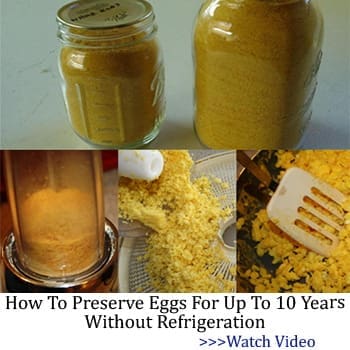It’s that time of year again – the beginning of autumn. The air is getting crisp and the days are getting shorter.
For us homesteaders, this season ain’t just about cozy sweaters. It’s a moment for strategic foresight and planning, it’s about getting our hands dirty and bringing in the harvest.
So, let’s roll up our sleeves and dive into the essential tasks that autumn brings. It’s time to prepare our homestead for the colder season, ensuring that our hard work continues to pay off throughout the year.
Preparing Your Garden for Winter
Your garden requires special attention as autumn sets in.
The first step is to harvest any remaining crops and make sure nothing goes to waste.
Next, it’s time for a good clean-up. Remove spent plants and any fallen fruit or vegetables that could attract pests. It’s also a good idea to weed your garden thoroughly. Remember, a clean garden now means fewer pests and diseases to deal with in the spring.
Once your garden is clean, consider planting cover crops. These hardy plants, like rye or clover, can protect your soil from erosion and add valuable nutrients.
Finally, don’t forget to protect your perennials. Mulch serves as a reliable ally for any gardener, offering a protective shield against the severe cold of winter. Apply a generous layer around your plants after the first hard frost.

Food Preservation and Storage
From jams and jellies to pickles and sauces, canning can extend the life of your harvest and provide delicious treats throughout the winter.
Dehydrating is another excellent preservation method. It’s particularly good for fruits, herbs, and even some vegetables. Plus, dehydrated foods take up less storage space.
Related: 10 Fruits And Veggies To Dehydrate For Long-Time Storage

Don’t forget about cold storage options. Underground crops such as potatoes, carrots, and beets can be preserved for an extended period in a chilled, shadowy location. If you have a root cellar, it can also serve as a storage spot for fruits like apples and pears.
You should use fresh fruits and veggies, and keep your storage space clean.

DIY Projects for Autumn
One great project is building a simple hoop house. This will extend your growing season and provide a warm space for winter crops. Plus, it’s a project that can be scaled to fit your space and needs.
Another project you can try is setting up a compost pile. If you want to get rid of your fallen leaves, at least make them useful by turning them into compost. Not only will this reduce your waste, but it will also provide nutrient-rich compost for your garden next spring.
Finally, consider building or improving your rainwater harvesting system. Autumn rains provide a great opportunity to stockpile water.
Related: Ingenious Rain Catchment System For Your Homestead

Preparing Your Livestock Starting Now
You need to make sure that your livestock is ready for the upcoming colder months.
Start by adjusting their feed. As the temperature drops, your livestock’s nutritional needs will increase. Make sure they have access to plenty of food to help them maintain their body heat.
Next, check their shelter. It should be secure, dry, and free from drafts. Consider adding extra bedding for insulation and comfort. Don’t forget about water. Your animals require access to fresh, unfrozen water at all times. Consider investing in a heated waterer or devise a system to prevent freezing.
Lastly, autumn is a good time for health checks. Contact your vet to make sure your livestock are healthy and vaccinations are up-to-date before the onset of winter. For example, even if your chickens can withstand lower temperatures in general, during cold weather they will not spend that much time outdoors; so preventing a disease outbreak inside the chicken coop is mandatory.

Tips and Tricks for Autumn Homesteading
Here are some additional tips and tricks to help you make the most of this time:
- Plan Ahead: Use this time to plan your garden for the next year. Consider crop rotation to maintain soil health and prevent pests and diseases.
- Plant Garlic and Onions: Autumn is the perfect time to plant garlic and onions. They’ll have a head start in spring and provide an early harvest.
- Take Advantage of Cooler Weather: Use the cooler weather to do heavy work like land clearing or fence building. It’s much easier to do this work in cooler weather than in the heat of summer.
- Prepare for Pests: As the weather cools, pests will be seeking warm places to overwinter. Make sure your home and outbuildings are sealed against rodents and other pests.
- Make Repairs: Autumn is a good time to make any necessary repairs to buildings, equipment, and tools. It’s much easier to do this work now than in the dead of winter.

Final Thoughts
Remember, every homestead is unique, so adapt these tips to fit your specific needs and circumstances. Living off the grid is not an easy task and requires a lot of time and attention.
Every season is different, and as a homesteader, you should take advantage of this.
You may also like:
 DIY Mini Greenhouse For Year-Round Vegetables
DIY Mini Greenhouse For Year-Round Vegetables
Easy to Build Root Cellar in Your Own Back Yard (Video)
Crucial Items to Stockpile for Winter
8 Common Mistakes Most People Make When Preparing For Winter








